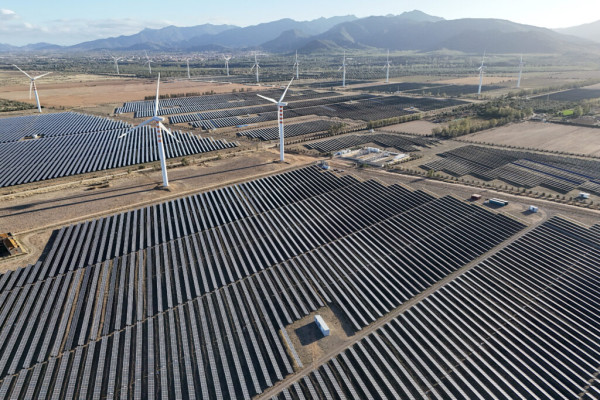World fails first review of COP renewable energy goal
BRUSSELS — Reaching the landmark renewable energy targets agreed at last year’s global climate summit will remain a distant dream unless the world invests more than $30 trillion over the next six years.
That’s the stark warning the International Renewable Energy Agency (IRENA) delivered Friday at the final ministerial meeting ahead of next month’s United Nations climate summit in Azerbaijan, known as COP29, where financing for climate action will take center stage.
At last year’s COP28 conference in Dubai, countries pledged to collectively triple the world’s renewable energy capacity and double energy-saving efforts by 2030. The commitments were hailed as key to limiting global warming in line with the Paris Agreement.
IRENA’s first progress assessment, published Friday, gives the world a failing grade across the board. For the tripling target, the agency found that countries are on track for only half the renewable power growth required to meet the goal.
Stronger policies, easier permitting and modernizing power grids are crucial to making up for the shortfall — as is a dramatic surge in investment, according to IRENA.
Investment in renewables reached a record high of $570 billion last year, but what’s needed is $1.5 trillion a year, IRENA says. And spending on energy-saving measures must increase seven-fold to reach the doubling target, from $323 million last year to $2.2 trillion annually.
In total, reaching the twin COP28 targets requires a cumulative global investment of $31.5 trillion in renewables, grids, energy efficiency and related measures by 2030, according to IRENA.
The findings are likely to bolster developing countries’ push for a massive increase in financial support. IRENA’s assessment comes just one month before the start of COP29, where countries are meant to agree on a new collective financial target to fund climate action — crucially, switching from fossil fuels to renewables — in developing countries.
Some proposals to replace the current target of $100 billion a year reach up to $1.3 trillion. But developed countries and the European Union argue that any significant increase in public finance requires emerging economies like China to start chipping in, and that the majority of investments must come from the private sector, not national budgets.
IRENA says a “major scale-up” in both public and private financing is required to increase the share of investment in developing countries.
The vast majority of investment in renewables last year — 84 percent — was channeled into the EU, China and the United States. India and Brazil accounted for around 6 percent; investments in Africa are minuscule and actually halved between 2022 and 2023.
IRENA’s progress assessment finds the world falling short on almost every measure, aside from solar power.

To reach the COP28 tripling target, installed renewables capacity would have to increase from 3.9 terawatts (TW) today to 11.2 TW by the end of the decade, the agency says. But current national targets are projected to add only another 3.5 TW to reach 7.4 TW by 2030.
Countries’ plans submitted to the U.N. under the Paris Agreement — known as nationally determined contributions, or NDCs — suggest even weaker growth, reaching only 5.4 TW by 2030. Governments are required to submit updated NDCs next year; IRENA says that the new set of plans must “more than double” their renewables targets.
Solar is the only renewable technology growing at the required level. Onshore wind needs to triple, while offshore wind and bioenergy should increase six-fold. Geothermal capacity ought to grow 35 times faster than it did last year to meet its projected share.
On energy efficiency, “little meaningful progress has been made” over the past year, IRENA says. Some key measures to save energy include renovating old buildings and boosting electrification, as electric vehicles and heat pumps consume less energy than their fossil fuel counterparts.
Yet while EV sales reached a record 18 percent of total global car sales last year, the picture is dire for heat pumps, the agency warns: After a brief surge in 2022, their sales fell by 3 percent in 2023, with a particularly notable decline in Europe.